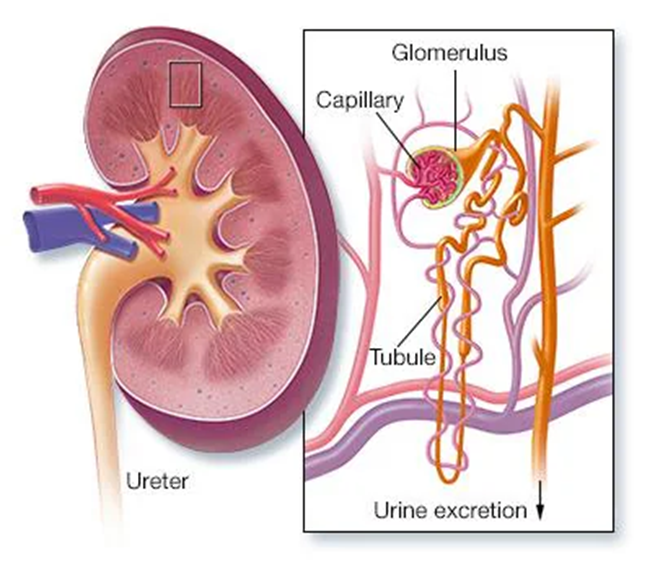Which describes the pathology of immune thrombocytopenia?
Diffuse fibrin deposition in the microvasculature
Deficiency in the production rate of globin chains
An excessive destruction of platelets
Bone marrow failure in which all elements are suppressed
The Correct Answer is C
The correct answer is c. An excessive destruction of platelets.
Choice A: Diffuse fibrin deposition in the microvasculature
Diffuse fibrin deposition in the microvasculature is not characteristic of immune thrombocytopenia (ITP). This description is more aligned with disseminated intravascular coagulation (DIC), a condition where widespread clotting occurs within the blood vessels, leading to multiple organ damage.
Choice B: Deficiency in the production rate of globin chains
A deficiency in the production rate of globin chains is associated with thalassemia, a genetic blood disorder that affects the production of hemoglobin. This is not related to the pathology of immune thrombocytopenia.
Choice C: An excessive destruction of platelets
An excessive destruction of platelets is the hallmark of immune thrombocytopenia (ITP). In ITP, the immune system mistakenly targets and destroys platelets, which are essential for blood clotting. This leads to a low platelet count and an increased risk of bleeding.
Choice D: Bone marrow failure in which all elements are suppressed
Bone marrow failure in which all elements are suppressed is characteristic of aplastic anemia, a condition where the bone marrow fails to produce sufficient blood cells. This is not related to immune thrombocytopenia.
Nursing Test Bank
Naxlex Comprehensive Predictor Exams
Related Questions
Correct Answer is ["A","D"]
Explanation
Choice A reason:
Facial edema is a common clinical manifestation of nephrotic syndrome in children. This occurs due to the retention of fluid in the tissues, which is a result of the kidneys leaking protein into the urine (proteinuria). The loss of protein reduces the oncotic pressure in the blood vessels, leading to fluid accumulation in the interstitial spaces, particularly noticeable around the eyes and face.

Choice B Reason:
Cloudy smoky brown-colored urine is not typically associated with nephrotic syndrome. This symptom is more indicative of hematuria, which is the presence of blood in the urine. Hematuria is more commonly seen in conditions such as glomerulonephritis rather than nephrotic syndrome.
Choice C Reason:
Weight loss is not a characteristic symptom of nephrotic syndrome. In fact, children with nephrotic syndrome often experience weight gain due to fluid retention. The accumulation of fluid in the body can lead to an increase in weight, rather than a loss.
Choice D Reason:
Frothy appearing urine is a hallmark sign of nephrotic syndrome. The frothiness is due to the high levels of protein being excreted in the urine (proteinuria). When protein is present in the urine, it can cause the urine to appear foamy or frothy.
Correct Answer is B
Explanation
The correct answer is b. Preadolescent growth spurt
Choice A reason:
Idiopathic scoliosis is not typically noticeable when a toddler begins to walk. At this stage, the spine is still developing, and any curvature is usually not significant enough to be detected. Idiopathic scoliosis most commonly becomes noticeable during periods of rapid growth, which occur later in childhood.
Choice B Reason:
The preadolescent growth spurt is the period when idiopathic scoliosis becomes most noticeable. This is because the rapid growth during this time can exacerbate the curvature of the spine. Idiopathic scoliosis often becomes apparent between the ages of 10 and 18 years, when children experience significant growth spurts.

Choice C Reason:
Late adolescence is not the period when idiopathic scoliosis becomes most noticeable. By this time, most children have completed their major growth spurts, and any scoliosis would likely have been detected earlier. The condition is typically identified during the preadolescent growth spurt.
Choice D Reason:
The newborn period is not associated with the development of idiopathic scoliosis. While congenital scoliosis can be present at birth, idiopathic scoliosis develops later in childhood, particularly during periods of rapid growth.
Whether you are a student looking to ace your exams or a practicing nurse seeking to enhance your expertise , our nursing education contents will empower you with the confidence and competence to make a difference in the lives of patients and become a respected leader in the healthcare field.
Visit Naxlex, invest in your future and unlock endless possibilities with our unparalleled nursing education contents today
Report Wrong Answer on the Current Question
Do you disagree with the answer? If yes, what is your expected answer? Explain.
Kindly be descriptive with the issue you are facing.
